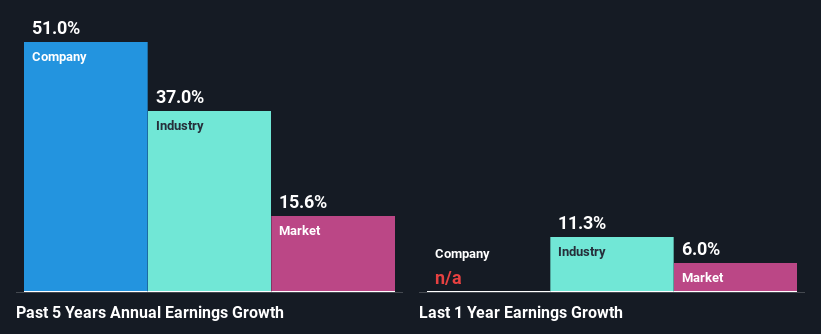General Electric Company's (NYSE:GE) Stock Is Going Strong: Is the Market Following Fundamentals?
General Electric (NYSE:GE) has had a great run on the share market with its stock up by a significant 19% over the last three months. Given the company's impressive performance, we decided to study its financial indicators more closely as a company's financial health over the long-term usually dictates market outcomes. Particularly, we will be paying attention to General Electric's ROE today.
ROE or return on equity is a useful tool to assess how effectively a company can generate returns on the investment it received from its shareholders. In simpler terms, it measures the profitability of a company in relation to shareholder's equity.
View our latest analysis for General Electric
How Do You Calculate Return On Equity?
Return on equity can be calculated by using the formula:
Return on Equity = Net Profit (from continuing operations) ÷ Shareholders' Equity
So, based on the above formula, the ROE for General Electric is:
25% = US$8.4b ÷ US$33b (Based on the trailing twelve months to March 2023).
The 'return' is the yearly profit. So, this means that for every $1 of its shareholder's investments, the company generates a profit of $0.25.
Why Is ROE Important For Earnings Growth?
Thus far, we have learned that ROE measures how efficiently a company is generating its profits. We now need to evaluate how much profit the company reinvests or "retains" for future growth which then gives us an idea about the growth potential of the company. Assuming all else is equal, companies that have both a higher return on equity and higher profit retention are usually the ones that have a higher growth rate when compared to companies that don't have the same features.
General Electric's Earnings Growth And 25% ROE
First thing first, we like that General Electric has an impressive ROE. Further, even comparing with the industry average if 27%, the company's ROE is quite respectable. Therefore, it might not be wrong to say that the impressive five year 51% net income growth seen by General Electric was probably achieved as a result of the high ROE.
As a next step, we compared General Electric's net income growth with the industry, and pleasingly, we found that the growth seen by the company is higher than the average industry growth of 37%.
The basis for attaching value to a company is, to a great extent, tied to its earnings growth. It’s important for an investor to know whether the market has priced in the company's expected earnings growth (or decline). Doing so will help them establish if the stock's future looks promising or ominous. What is GE worth today? The intrinsic value infographic in our free research report helps visualize whether GE is currently mispriced by the market.
Is General Electric Efficiently Re-investing Its Profits?
General Electric's three-year median payout ratio to shareholders is 5.9%, which is quite low. This implies that the company is retaining 94% of its profits. So it looks like General Electric is reinvesting profits heavily to grow its business, which shows in its earnings growth.
Additionally, General Electric has paid dividends over a period of at least ten years which means that the company is pretty serious about sharing its profits with shareholders. Upon studying the latest analysts' consensus data, we found that the company is expected to keep paying out approximately 6.2% of its profits over the next three years. Still, forecasts suggest that General Electric's future ROE will drop to 14% even though the the company's payout ratio is not expected to change by much.
Conclusion
Overall, we are quite pleased with General Electric's performance. Particularly, we like that the company is reinvesting heavily into its business, and at a high rate of return. Unsurprisingly, this has led to an impressive earnings growth. Having said that, on studying current analyst estimates, we were concerned to see that while the company has grown its earnings in the past, analysts expect its earnings to shrink in the future. To know more about the latest analysts predictions for the company, check out this visualization of analyst forecasts for the company.
Have feedback on this article? Concerned about the content? Get in touch with us directly. Alternatively, email editorial-team (at) simplywallst.com.
This article by Simply Wall St is general in nature. We provide commentary based on historical data and analyst forecasts only using an unbiased methodology and our articles are not intended to be financial advice. It does not constitute a recommendation to buy or sell any stock, and does not take account of your objectives, or your financial situation. We aim to bring you long-term focused analysis driven by fundamental data. Note that our analysis may not factor in the latest price-sensitive company announcements or qualitative material. Simply Wall St has no position in any stocks mentioned.
Join A Paid User Research Session
You’ll receive a US$30 Amazon Gift card for 1 hour of your time while helping us build better investing tools for the individual investors like yourself. Sign up here

 Yahoo Finance
Yahoo Finance 
